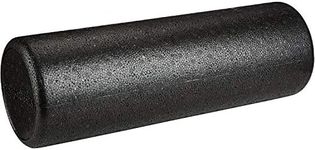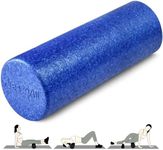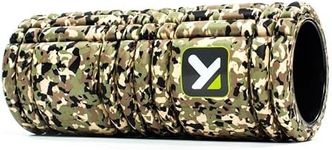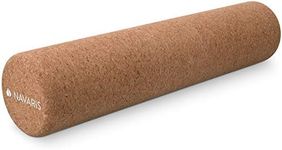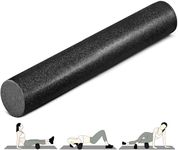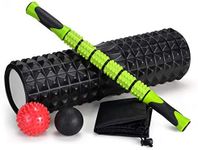Buying Guide for the Best Foam Rollers
Foam rollers are popular tools for self-massage, muscle recovery, and flexibility training. Choosing the right foam roller can make a big difference in your comfort and the effectiveness of your routine. When shopping for a foam roller, it's important to consider how you plan to use it, your experience level, and your sensitivity to pressure. Understanding the key features will help you find a roller that matches your needs and helps you get the most out of your workouts or recovery sessions.DensityDensity refers to how firm or soft the foam roller feels. This is important because it affects how much pressure you feel during use. Soft (low-density) rollers are gentle and best for beginners or people with sore muscles, while medium-density rollers offer a balance of comfort and effectiveness for most users. High-density rollers are very firm and provide deep pressure, which is great for experienced users or those who want intense muscle release. To pick the right density, think about your pain tolerance and how much pressure you want—if you're new or sensitive, start softer; if you want a deeper massage, go firmer.
Size and LengthFoam rollers come in different lengths, usually ranging from about 12 to 36 inches. Longer rollers (around 36 inches) are more stable and versatile, making them good for rolling large muscle groups like your back or legs. Shorter rollers are more portable and easier to use on smaller areas like arms or calves. If you want a roller for full-body use at home, a longer one is a good choice. If you need something for travel or targeting specific spots, a shorter roller might be better.
Surface TextureThe surface of a foam roller can be smooth or textured. Smooth rollers provide even pressure and are less intense, making them suitable for beginners or those who prefer a gentler massage. Textured rollers have ridges or bumps that mimic a massage therapist’s hands, offering a deeper, more targeted massage. If you want to work out knots or trigger points, a textured roller can be helpful. Choose the surface based on your comfort level and whether you want a general or more focused massage.
Material QualityFoam rollers are made from different types of foam, such as EVA, EPP, or polyethylene. Higher-quality materials are more durable and keep their shape longer, while lower-quality foam may break down or flatten with use. If you plan to use your roller often or need it to last, look for one made from high-density or premium foam. If you only plan to use it occasionally, material quality may be less critical.
Weight CapacityWeight capacity refers to how much weight the foam roller can support without losing its shape. This is important for ensuring the roller remains effective and safe to use. Most standard rollers can handle average body weights, but if you are heavier or plan to use the roller for intense exercises, check the manufacturer’s recommendations. Picking a roller with a suitable weight capacity ensures it will perform well and last longer.
